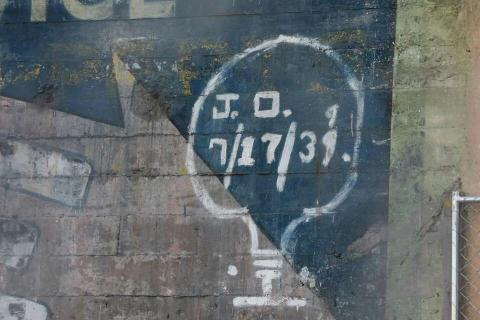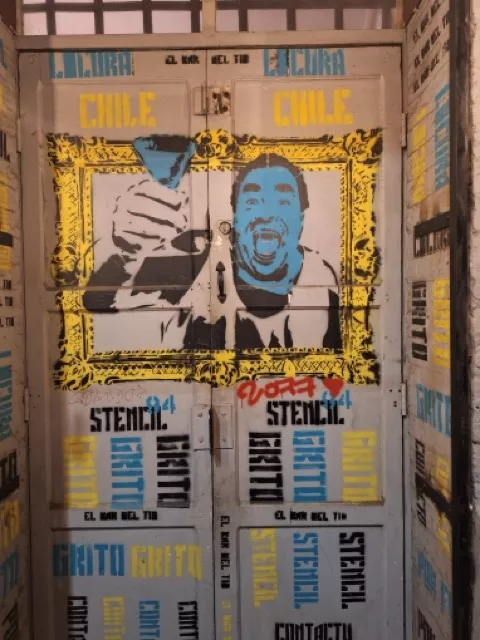Welcome to the new/updated site! The Archives and search function may look a bit different, but it is still the same good time. Since 2002, your old-school website for all things stencils. Please consider donating what you can to support the much-needed upgrade. Photo submissions always welcome. Enjoy and stay curious.
Other ways to support this site (beyond submitting pics, videos, exhibit info, etc.):
- Visit the Stencil Archive Support page to purchase a copy of Stencil Nation or take a tour.
- Find the Stencil Archives' best original photos on Instagram and flickr.
The Stencil Photo Uploads Begin in Chile
Here we go! So much to learn about the newest version of Stencil Archive, and we are taking it sloooow. To start off the New Era, we will spend some time in South America. Amanda in Argentina has been sending great photos from her travels, and she even checked out the new site before it went live. Thanks, as always! This morning, we will visit Chile and look at some fun walls. Enjoi!
Construction Demo Reveals Two 1930s Tags

Nearly century-old mural uncovered in S.F.’s Mission District
By Megan Fan Munce
Dec 06, 2023
Nate Halverson was up on his building’s roof taking in the sunrise last Wednesday when some early morning construction caught his eye. At a parking lot near the intersection of Valencia and Cesar Chavez streets, a worker in an excavator was taking down a vacant building to make way for new construction. Halverson watched as the debris peeled away, revealing behind it a 1930s Chevrolet dealership mural.
The mural itself isn’t dated, but a light bulb-shaped graffiti tag dated July 17, 1939, places the mural somewhere during or before the 1930s. Another tag, painted below the mural, is dated 1935.
Hollywood in Cambodia
Galeria de arte (Buenos Aires). Avalando diversas expresiones de arte urbano desde el 2006.... abierto todos los días de 18 a 23 hs
HIC CRUE : Malatesta, Run Dont Walk y bs.as.stencil
Capturing Ancient Graffiti with Photogrammetry, Laser Scanning, and 3D Imaging
History From Scratch
Cutting-edge tools are rescuing ancient graffiti from obscurity—and preserving them forever
by Amy Crawford for Smithsonian Magazine
BEGINNING WITH ITS construction in the fourth century B.C. and continuing for more than 800 years, the Temple of Isis on the small island of Philae, set where the Nile flowed out of Nubia, was visited by a stream of pilgrims. Coming from all parts of the Egyptian empire, and even as far away as Cyprus and Rome, they passed between 60-foot towers to attend elaborate seasonal ceremonies that celebrated Isis’ miraculous resurrection of her husband, the god Osiris, and the birth of their son, Horus. They beseeched Isis, the queen of the Egyptian pantheon, for aid and thanked her for interceding in their affairs.
Before heading home, many also etched their marks—a carving of their footprints on sacred ground, a picture of the deity, a name, a date or perhaps a short prayer—into the temple’s massive sandstone blocks. Some testified to the difficulty of their journey: “Isis, you are the Mistress of the Road,” wrote a third-century A.D. Nubian envoy named Sasan, beside a crude self-portrait. “Our hearts are entrusted to you upon the way.” Others were likely carved on pilgrims’ behalf by the priests who worked at the temple: “His name endures forever: Nesmety, the banker of Isis....As for the one who will erase these writings, his name will be erased forever.”
Bianca Levan
A papercut imbued with the imperfections that arise from a precise tool in imprecise human hands. I revel in the uniqueness of these variations and hope that they serve to personalize the work so that others may find their own imperfect, evolving, growing stories within it.

